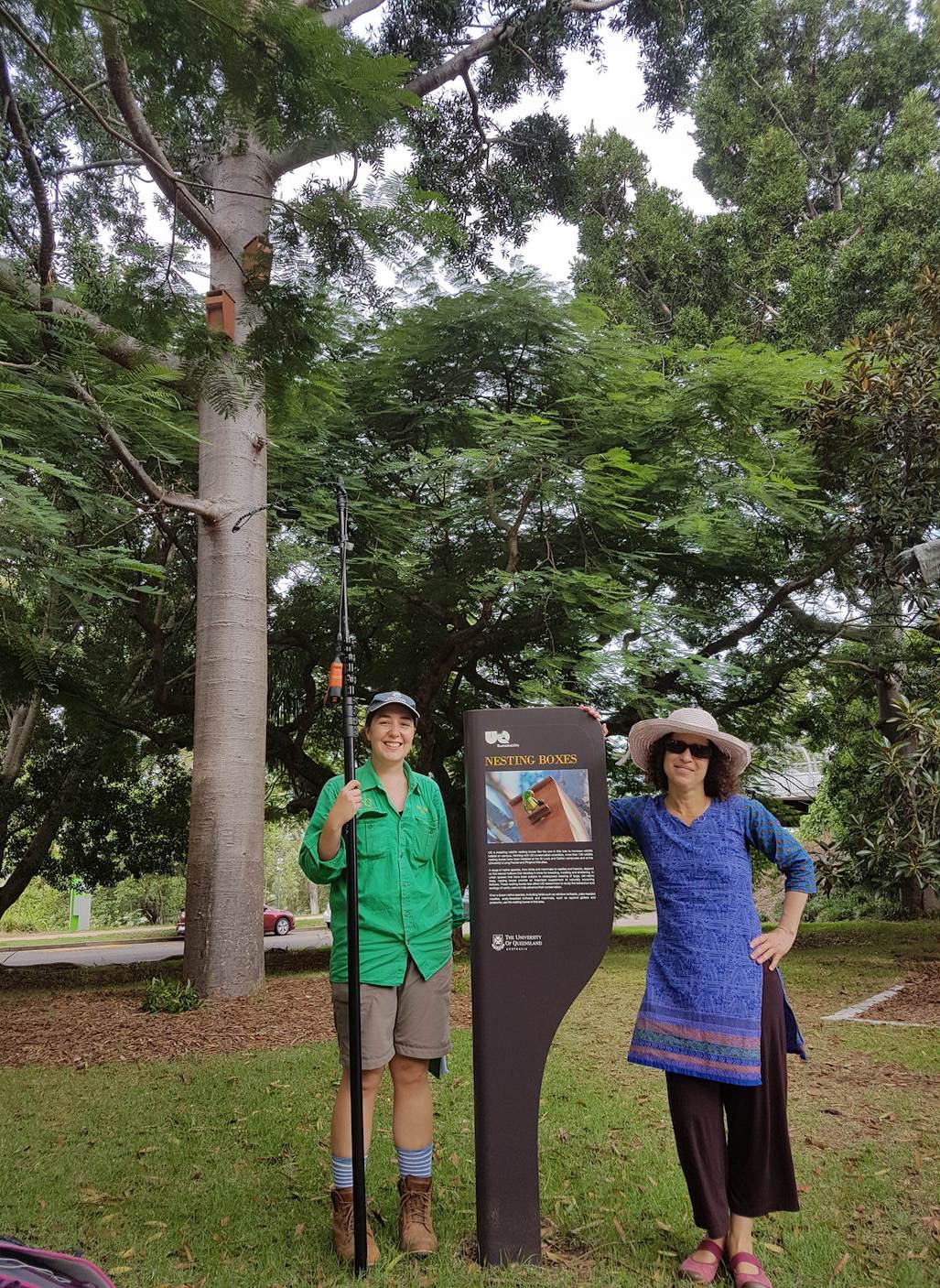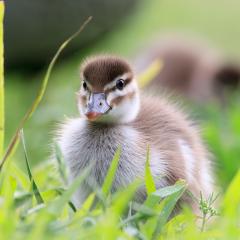 UQ's bird and native mammal population is in for another welcome boost: earlier this month, 30 new bird boxes were installed at the University's Pinjarra Hills site.
UQ's bird and native mammal population is in for another welcome boost: earlier this month, 30 new bird boxes were installed at the University's Pinjarra Hills site.
This latest installation is part of the Property and Facilities Division's ongoing collaboration with the Biodiversity Research Group, a UQ-based research team at the School of Biological Sciences, led by Associate Professor Salit Kark, that investigates ecology and conservation science.
One aspect the Kark Group is especially interested in is what factors allow native and introduced bird species to thrive in human-modified and urban environments. Tree hollows are an important part of avian success in cities, since many cavity-nesting native birds (such as native parrots) use natural cavities in trees to reproduce. Built-up areas in urban environments have lost many large old trees with such hollows, and bird boxes can provide an addition to natural cavities for birds and mammals. As well as offering birds space to rest and nest, the boxes also act as 'living laboratories' for researchers and contribute to campus sustainability.
The University has now installed a total of 108 bird boxes across St Lucia, Gatton and Pinjarra Hills, with more in the pipeline for our local winged wildlife. Ongoing monitoring of the boxes will inform researchers' understanding of what certain species need to survive in an urban environment, and help boost biodiversity at UQ.
UQ's bird and native mammal population is in for another welcome boost: earlier this month, 30 new bird boxes were installed at the University's Pinjarra Hills site.
This latest installation is part of the Property and Facilities Division's ongoing collaboration with the Biodiversity Research Group, a UQ-based research team at the School of Biological Sciences, led by Associate Professor Salit Kark, that investigates ecology and conservation science.
One aspect the Kark Group is especially interested in is what factors allow native and introduced bird species to thrive in human-modified and urban environments. Tree hollows are an important part of avian success in cities, since many cavity-nesting native birds (such as native parrots) use natural cavities in trees to reproduce. Built-up areas in urban environments have lost many large old trees with such hollows, and bird boxes can provide an addition to natural cavities for birds and mammals. As well as offering birds space to rest and nest, the boxes also act as 'living laboratories' for researchers and contribute to campus sustainability.
The University has now installed a total of 108 bird boxes across St Lucia, Gatton and Pinjarra Hills, with more in the pipeline for our local winged wildlife. Ongoing monitoring of the boxes will inform researchers' understanding of what certain species need to survive in an urban environment, and help boost biodiversity at UQ.



